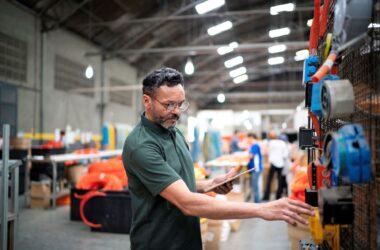The materials chosen for a construction project can have a significant impact on the overall sustainability of a project. Demand for sustainable alternatives to more traditional building materials is on the rise.
Sourcing sustainable construction materials can present various challenges, but addressing these hurdles is crucial for promoting environmentally responsible and socially conscious building practices. Here are some common challenges and strategies for overcoming them.
Limited Availability
Sustainable materials may have limited availability compared to traditional counterparts.
To address this, actively seek out suppliers specialising in sustainable materials. Foster relationships with such suppliers to ensure a more consistent and reliable supply chain. Embrace solutions that make it easier to source quotes from a variety of different merchants.
Cost Considerations
Sustainable materials can be more expensive than conventional ones.
Conduct a lifecycle cost analysis to demonstrate the long term financial benefits of sustainable materials, such as reduced maintenance costs and energy savings.
Additionally, explore government incentives and certifications that may help offset initial costs.
Learn more about the economics of sustainable construction materials.
Certification and Standards
There may be a lack of standardised certifications or conflicting standards for sustainable materials.
Stay informed about recognised certifications (e.g., LEED, BREEAM) and look for materials that adhere to them.
Engage with industry associations and collaborate with stakeholders to establish clear standards for sustainable materials and stay up to date with innovations in this area.
Quality and Performance Concerns
Some sustainable materials may be perceived as inferior in terms of quality or performance.
Conduct thorough research and testing to ensure that chosen sustainable materials meet or exceed performance requirements.
Share success stories and case studies to build confidence in the use of these materials.
Education and Awareness
There is often a lack of awareness or knowledge among project stakeholders about sustainable materials.
Attend relevant training sessions and workshops, and read informational materials to increase your own knowledge. Share this information with industry peers, such as architects, clients, and other stakeholders to improve industry awareness of sustainable materials and their benefits.
Actively promote your use of sustainable construction materials to encourage others to use them.
Regulatory Compliance
It can be challenging to navigate the complex regulations related to the use of sustainable materials.
Stay informed about local and national regulations related to sustainable construction. Engage with regulatory bodies to advocate for supportive policies and seek clarity on compliance requirements.
Supply Chain Transparency
Ensuring transparency in the entire supply chain to verify the sustainability claims of materials is another challenge when procuring sustainable construction materials.
Collaborate with suppliers who are committed to transparency. Encourage suppliers to provide detailed information about the sourcing, manufacturing, and transportation processes of their materials.
Consider using blockchain or other technology to enhance supply chain traceability.
Waste Management
Sustainable materials may generate unique waste or disposal challenges.
Plan for the end-of-life disposal or recycling of materials from the project’s inception. Collaborate with waste management services and explore opportunities for material reuse or recycling.
Local Sourcing
When procuring sustainable construction materials, it can be hard to balance the desire for sustainable materials with the goal of sourcing locally.
Prioritise local sourcing when possible to reduce transportation-related environmental impacts.
However, recognise that some materials may need to be sourced from further locations to meet sustainability criteria, and seek a balance based on the project’s goals.
Changing Market Dynamics
The availability and cost of sustainable materials can be influenced by market fluctuations.
Stay agile and monitor market trends. Diversify sources and materials to mitigate risks associated with market changes. Establish long term relationships with suppliers to navigate fluctuations collaboratively.
By addressing these challenges with informed strategies, construction professionals can contribute to more sustainable and environmentally friendly building practices.
Finding New Suppliers with The Build Chain
Are you looking for alternative methods to source new suppliers and expand and diversify your supply chain?
The Build Chain allows you to submit an enquiry for the materials you need which is then distributed automatically to numerous suitable local suppliers.
This speeds up the materials procurement process and makes it easy to streamline your supply chain.
Want to know more? Book a demo.





